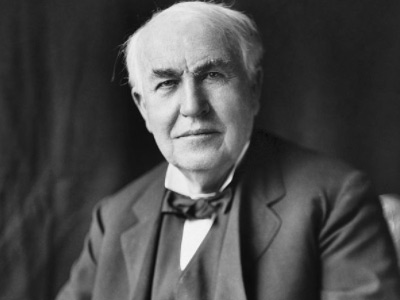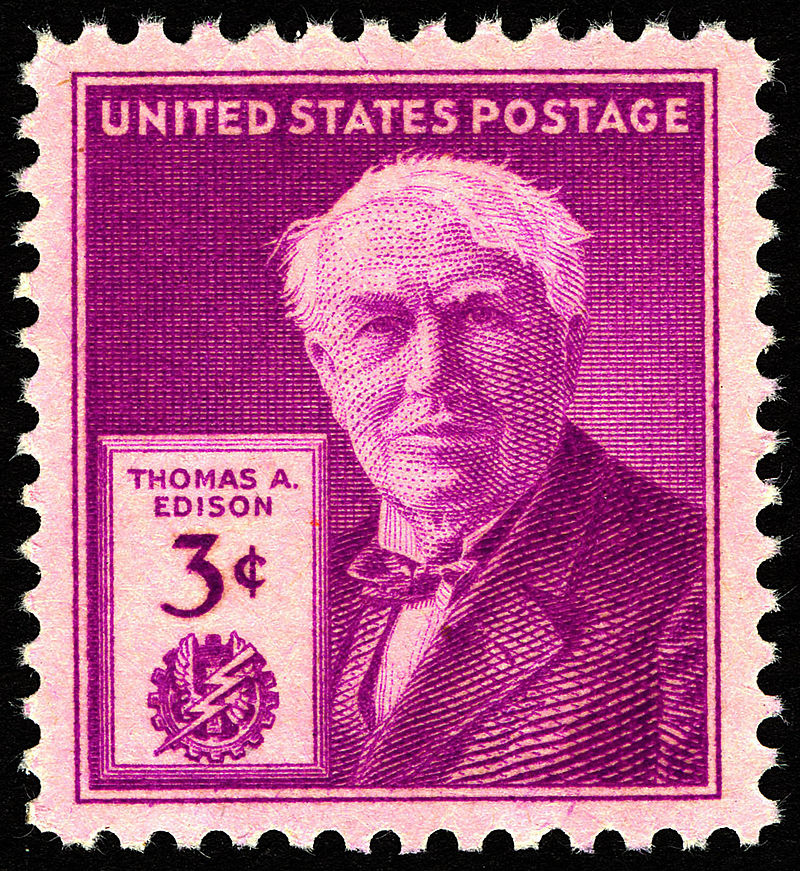Thomas Edison (1847-1931)
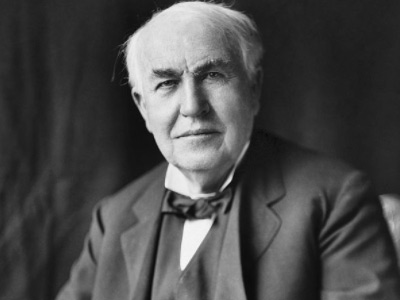
Electric Light
In 1878, Edison began working on a system of electrical illumination, something he hoped could compete with gas and oil based lighting. He began by tackling the problem of creating a long-lasting incandescent lamp, something that would be needed for indoor use. Many earlier inventors had previously devised incandescent lamps, including Alessandro Volta's demonstration of a glowing wire in 1800 and inventions by Henry Woodward and Mathew Evans. Others who developed early and commercially impractical incandescent electric lamps included Humphry Davy, James Bowman Lindsay, Moses G. Farmer, William E. Sawyer, Joseph Swan, and Heinrich Göbel. Some of these early bulbs had such flaws as an extremely short life, high expense to produce, and high electric current drawn, making them difficult to apply on a large scale commercially. Edison realized that to connect a series of electric lights to an economically manageable size and using the necessary thickness of copper wire, he would have to develop a lamp that used a low amount of current. This lamp must have high resistance and use relatively low voltage (around 110 volts).
After many experiments, first with carbon filaments and then with platinum and other metals, Edison returned to a carbon filament. The first successful test was on October 22, 1879; it lasted 13.5 hours. Edison continued to improve this design and on November 4, 1879, filed for U.S. patent 223,898 (granted on January 27, 1880) for an electric lamp using "a carbon filament or strip coiled and connected to platina contact wires". This was the first commercially practical incandescent light.
Although the patent described several ways of creating the carbon filament including "cotton and linen thread, wood splints, papers coiled in various ways", it was not until several months after the patent was granted that Edison and his team discovered a carbonized bamboo filament that could last over 1,200 hours. The idea of using this particular raw material originated from Edison's recalling his examination of a few threads from a bamboo fishing pole while relaxing on the shore of Battle Lake in the present-day state of Wyoming, where he and other members of a scientific team had traveled so that they could clearly observe a total eclipse of the sun on July 29, 1878, from the Continental Divide.
In 1878, Edison formed the Edison Electric Light Company in New York City with several financiers, including J. P. Morgan, Spencer Trask, and the members of the Vanderbilt family. Edison made the first public demonstration of his incandescent light bulb on December 31, 1879, in Menlo Park. It was during this time that he said: "We will make electricity so cheap that only the rich will burn candles."
Henry Villard, president of the Oregon Railroad and Navigation Company, attended Edison's 1879 demonstration. Villard was impressed and requested Edison install his electric lighting system aboard Villard's company's new steamer, the Columbia. Although hesitant at first, Edison agreed to Villard's request. Most of the work was completed in May 1880, and the Columbia went to New York City, United States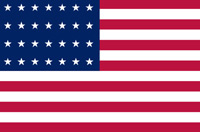 The United States of America (U.S.A. or USA), commonly known as the United States (U.S. or US) or America, is a country in North America. It is the world's third-largest country by both land and total area. The United States shares land borders with Canada to its north and with Mexico to its south. The national capital is Washington, DC, and the most populous city and financial center is New York City., where Edison and his personnel installed Columbia's new lighting system. The Columbia was Edison's first commercial application for his incandescent light bulb. The Edison equipment was removed from Columbia in 1895.
The United States of America (U.S.A. or USA), commonly known as the United States (U.S. or US) or America, is a country in North America. It is the world's third-largest country by both land and total area. The United States shares land borders with Canada to its north and with Mexico to its south. The national capital is Washington, DC, and the most populous city and financial center is New York City., where Edison and his personnel installed Columbia's new lighting system. The Columbia was Edison's first commercial application for his incandescent light bulb. The Edison equipment was removed from Columbia in 1895.
Lewis Latimer joined the Edison Electric Light Company in 1884. Latimer had received a patent in January 1881 for the "Process of Manufacturing Carbons", an improved method for the production of carbon filaments for light bulbs. Latimer worked as an engineer, a draftsman and an expert witness in patent litigation on electric lights.
George Westinghouse's company bought Philip Diehl's competing induction lamp patent rights (1882) for $25,000, forcing the holders of the Edison patent to charge a more reasonable rate for the use of the Edison patent rights and lowering the price of the electric lamp.
On October 8, 1883, the US patent office ruled that Edison's patent was based on the work of William E. Sawyer and was, therefore, invalid. Litigation continued for nearly six years, until October 6, 1889, when a judge ruled that Edison's electric light improvement claim for "a filament of carbon of high resistance" was valid. To avoid a possible court battle with Joseph Swan, whose British patent had been awarded a year before Edison's, he and Swan formed a joint company called Ediswan to manufacture and market the invention in Britain The United Kingdom of Great Britain and Northern Ireland, commonly known as the United Kingdom (UK) or Britain, is a country in Europe, off the north-western coast of the continental mainland. It comprises England, Scotland, Wales and Northern Ireland. The UK became the world's first industrialised country and was the world's foremost power during the 19th and early 20th centuries..
The United Kingdom of Great Britain and Northern Ireland, commonly known as the United Kingdom (UK) or Britain, is a country in Europe, off the north-western coast of the continental mainland. It comprises England, Scotland, Wales and Northern Ireland. The UK became the world's first industrialised country and was the world's foremost power during the 19th and early 20th centuries..
Mahen Theatre in Brno (in what is now the Czech Republic), opened in 1882, and was the first public building in the world to use Edison's electric lamps. Francis Jehl, Edison's assistant in the invention of the lamp, supervised the installation. In September 2010, a sculpture of three giant light bulbs was erected in Brno, in front of the theatre.
HISTORY
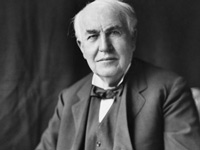
RESOURCES
This article uses material from the Wikipedia article "Thomas Edison (1847-1931)", which is released under the Creative Commons Attribution-Share-Alike License 3.0.
© Stories Preschool. All Rights Reserved.
